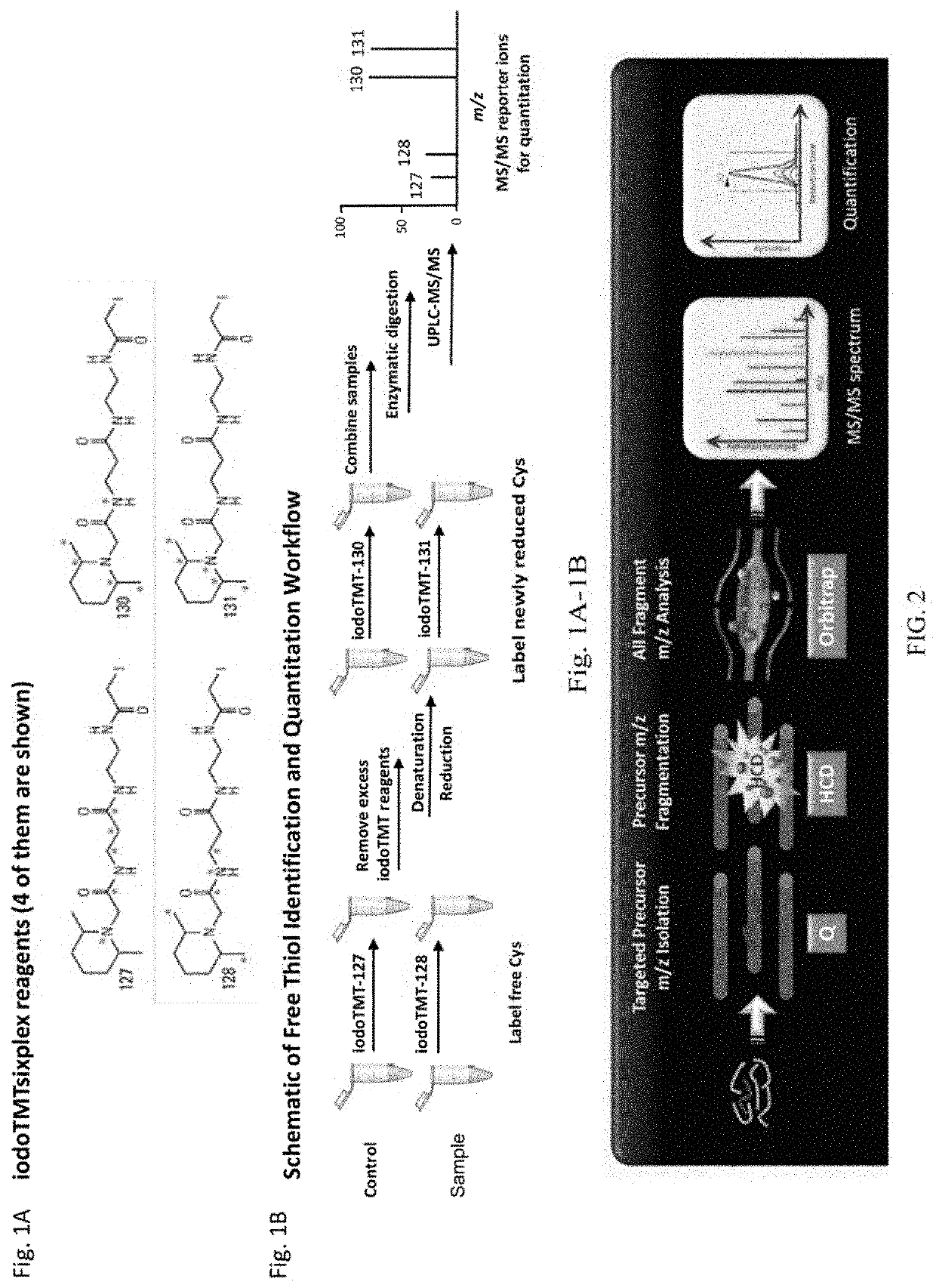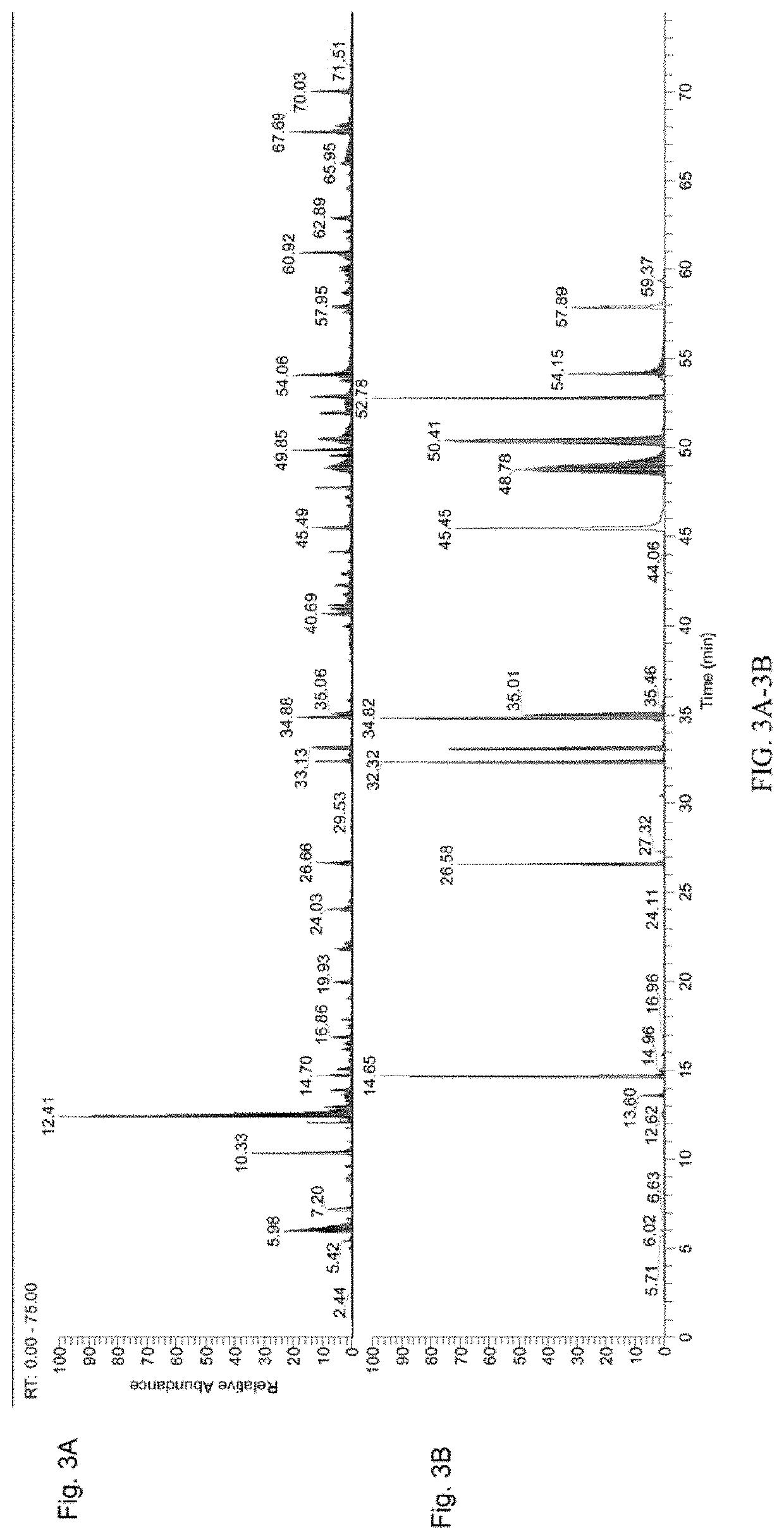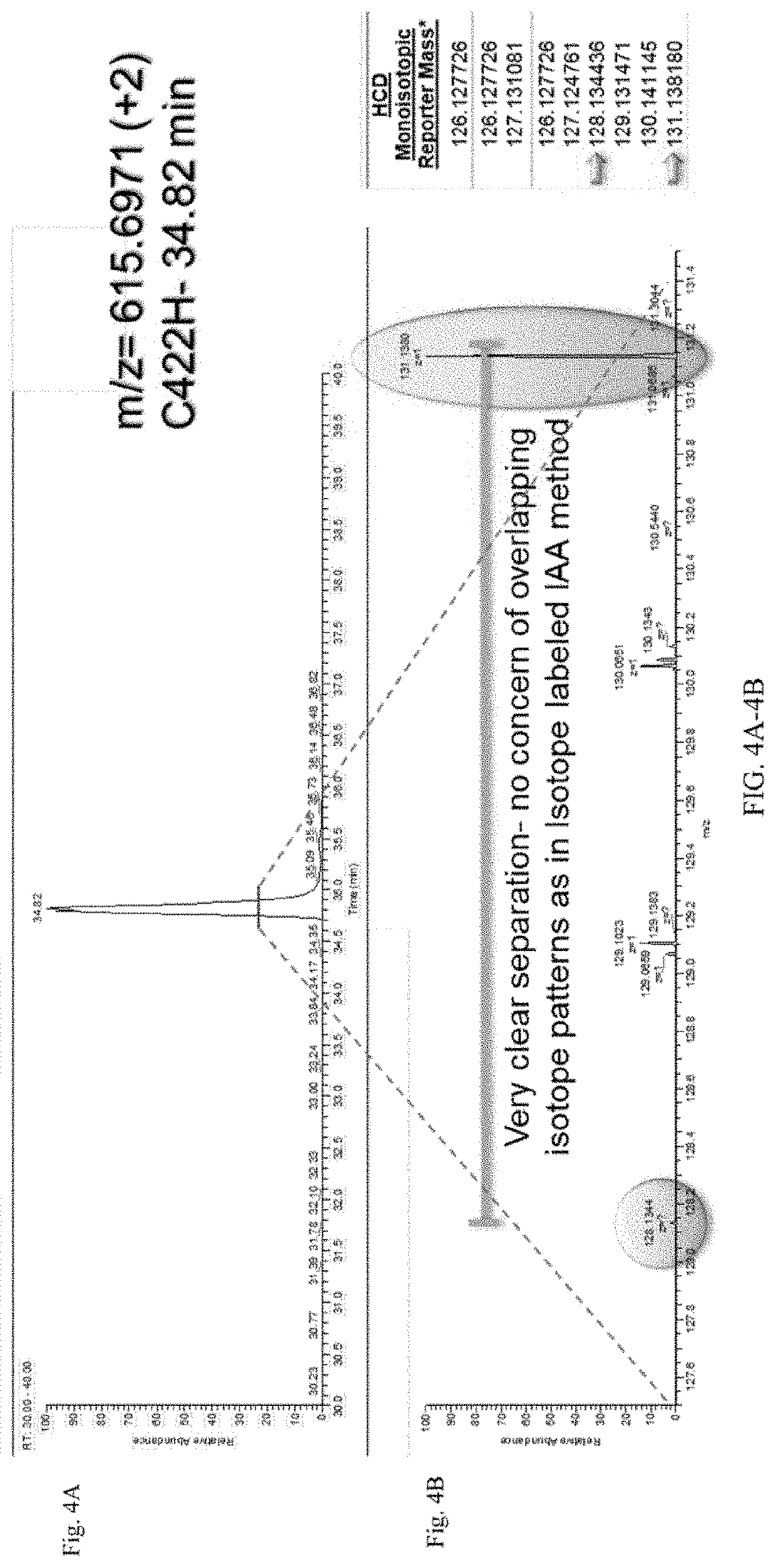Methods for identifying free thiols in proteins
a technology of free thiol and protein, applied in the field of systems and methods of characterizing free thiol group in proteins, can solve the problems of affecting the structural integrity, stability, biological functions, and the thermal stability of mab products, so as to reduce the sample, reduce the thermal stability, and reduce the effect of degradation
- Summary
- Abstract
- Description
- Claims
- Application Information
AI Technical Summary
Benefits of technology
Problems solved by technology
Method used
Image
Examples
example 1
of Site-Specific Free Thiols
[0054]Methods
[0055]Cysteine Labeling
[0056]The workflow from FIG. 1B was followed. In brief, a control sample and an antibody sample were labeled with iodo-TMT reagents (FIG. 1A). The excess reagents were removed and the samples were denatured and reduced using 0.5M TCEP and incubated for 1 hour. After denaturation and reduction, a second label was added to the samples. The samples were then combined, enzymatically digested, and analyzed using UPLC-MS / MS. UPLC conditions were as follows: Samples were run on a 150 mm CSH column for a 150 minutes run, including a 40 minute re-equilibration step. FA buffers were used.
[0057]Spike-in Study
[0058]For the spike-in study, aliquots of two different samples of the same protein were prepared. The proteins were denatured using GuanHCl and reduced. The samples were labeled with two different IodoTMT tags. A spike-in concentration gradient was then prepared. 10%, 5%, 1%, 0.5%, or 0.1% of protein sample 1 was added to ali...
PUM
| Property | Measurement | Unit |
|---|---|---|
| mass | aaaaa | aaaaa |
| mass | aaaaa | aaaaa |
| mass | aaaaa | aaaaa |
Abstract
Description
Claims
Application Information
 Login to View More
Login to View More - R&D
- Intellectual Property
- Life Sciences
- Materials
- Tech Scout
- Unparalleled Data Quality
- Higher Quality Content
- 60% Fewer Hallucinations
Browse by: Latest US Patents, China's latest patents, Technical Efficacy Thesaurus, Application Domain, Technology Topic, Popular Technical Reports.
© 2025 PatSnap. All rights reserved.Legal|Privacy policy|Modern Slavery Act Transparency Statement|Sitemap|About US| Contact US: help@patsnap.com



